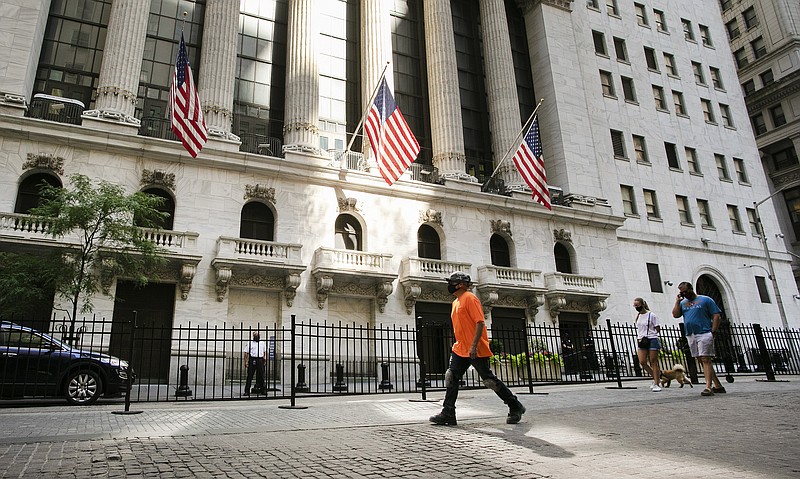NEW YORK -- Stock indexes barely budged on Wall Street on Friday, leaving the S&P 500 just shy of its record once again.
The S&P 500 edged down 0.58 point, or less than 0.1%, to 3,372.85 after drifting between small gains and losses throughout the day. They're the latest meandering moves for the market, which has taken a pause after erasing almost all of the steep losses caused by the coronavirus pandemic.
In each of the previous two days, the S&P 500 made a brief run above its record closing high, which was set in February, only to fade in the afternoon. It remains within 0.4% of its record.
Wall Street was nearly evenly split between stocks that rose and fell, and the moves were almost uniformly modest. The Dow Jones Industrial Average inched up 34.30 points, or 0.1%, to 27,931.02, while the Nasdaq composite dipped 23.20, or 0.2%, to 11,019.30.
[CORONAVIRUS: Click here for our complete coverage » arkansasonline.com/coronavirus]
Consumer spending is the main locomotive for the U.S. economy, and a report on Friday showed more improvements for U.S. retailers, though less than economists expected.
Sales at grocery stores, gas stations and other retailers rose 1.2% last month from June. It's the third-straight month of gains, after a historic plunge in the spring, but it marked a sharp slowdown from June's 8.4% growth. It also fell short of the 2% growth that economists were expecting.
The report showed that the economy is now "more in a gentle phase of recovery," said Mike Zigmont, director of trading and research at Harvest Volatility Management.
"It's positive, but it's not as ballistic as it was before," he said.
Economists say consumer spending could be under more pressure after the expiration of U.S. government programs to aid the economy, including $600 in extra unemployment benefits each week. Investors say it's crucial that Washington deliver another lifeline to the economy, and markets seem to be assuming a deal will happen.
But Democrats and Republicans say they remain far apart on a possible compromise.
"Main Street America is counting on it," Zigmont said. "You can't pull the rug out from under the world."
Among the biggest gainers in the S&P 500 was Applied Materials, which rose 3.9%. The tech company reported stronger results for the summer than analysts expected and also gave a better-than-expected forecast for the current quarter.
Outside the S&P 500, shares of German biopharmaceutical company CureVac more than tripled in their first day of trading. The company is developing a vaccine against covid-19 and other medicines using messenger RNA.
Treasury yields slowed their big jump from earlier in the week. The yield on the 10-year Treasury held steady at 0.71%. It had been at 0.57% just on Monday. It climbed through the week after a couple of reports on inflation came in higher than expected and after the U.S. Treasury auctioned off more bonds to help cover the government's huge deficit.
In Europe, stocks trended lower after Britain said it was imposing a 14-day quarantine on travelers from France, which said it would respond in kind. Tourism and travel stocks were hit particularly hard, such as low-fare airlines easyJet and International Airlines Group.
Asian markets were mixed after China reported its factory output rose 4.8% in July from a year earlier, on par with June's increase. Retail sales fell 1.1%, as consumers remain cautious.
Benchmark U.S. crude oil slipped 23 cents to settle at $42.01 per barrel. Brent crude, the international standard, fell 16 cents to $44.80.
Gold for delivery in December fell $20.60 to settle at $1,949.80 per ounce.
Information for this article was contributed by Yuri Kageyama of The Associated Press.
